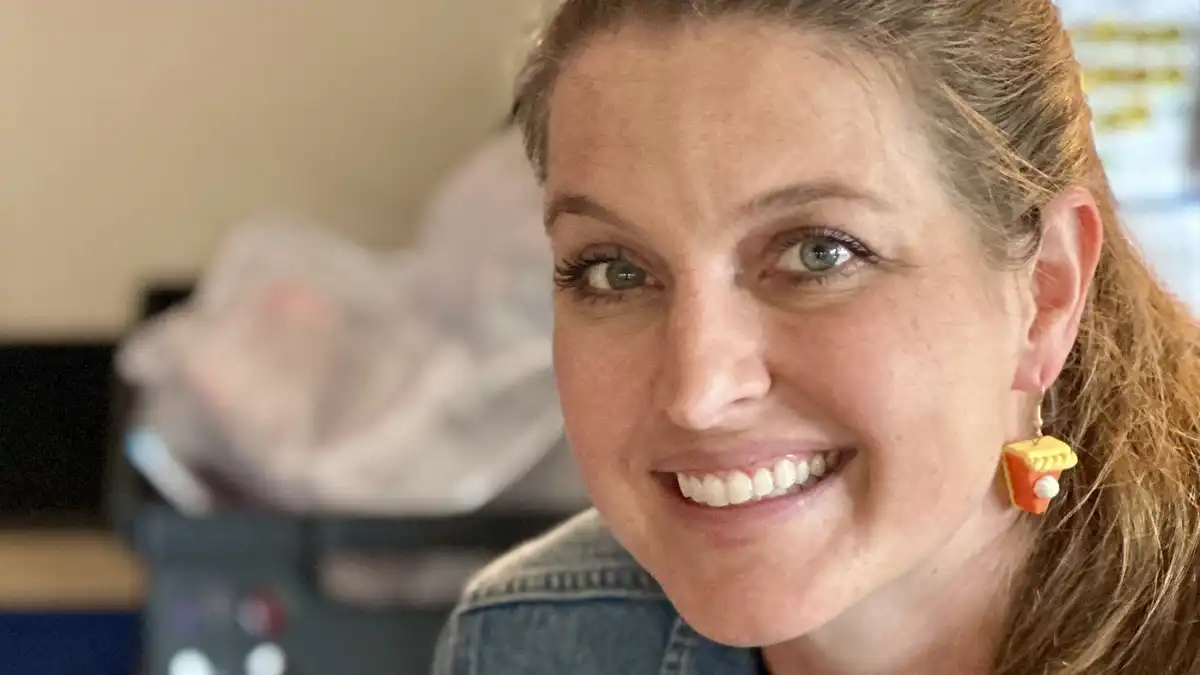“When you hear hoofbeats, think of horses, not zebras.” This popular advice, circa the 1940s, was intended to encourage doctors to diagnose common causes, rather than spending limited time and resources chasing down the possibility of rare diseases, according to the National Library of Medicine.
But zebras are not mythical creatures, and sometimes those hoofbeats are indeed zebras. For over 20 years, those hoofbeats were mine; I was one of the zebras.
It has been a long ride.
I was the kid who used my hypermobility as a party trick. I have fond memories walking down our hallway on the knuckles of my toes just to get a rise out of my mom. I could twist my elbows out, bend my knees and fingers back to awkward angles and stack quarters in a little cavity that formed between my collar bones when I positioned my shoulders just right. It wasn’t concerning at the time; I was simply very flexible.
My flexible fun began to subside, however, by the time I reached college in the early 2000s, as my bendy joints spiraled into injury after injury. I had two reconstructive joint surgeries on my feet before I was a sophomore, during which they discovered arthritis in those joints had advanced to that of an 80-year-old.
It was after nine stints in the emergency room for extreme elbow dislocations that my orthopedist, at his wits’ end, sent me to be evaluated for a rare connective tissue disorder called Ehlers-Danlos syndrome (EDS). The appointment was quick; it was concluded that I didn’t have it because my skin wasn’t translucent, and I was sent on my way. As a last-ditch experiment, Tommy John surgery provided the stability that my elbow needed. My orthopedist explained to me that, based on my flexibility, these joint issues were likely just the beginning. He guessed that as I got older, my other major joints would gradually suffer similar fates as wear and tear took their toll.
Sure enough, other joints continued to “pop out” out place. My other elbow, my knees, my hip, fingers. I learned to live around it and amassed an arsenal of braces, compression sleeves, arthritis gloves and crutches for the hip issue. To anyone else, I probably looked like a hypochondriac, as I would need these things for a day or two and then feel better. When well-meaning people asked what was wrong, my response was simply, “I’m fine, I just have slippery joints.”
Fast forward to last year when two of my blood vessels ruptured inexplicably. Obviously concerned, I mentioned to my doctor the slew of joint issues and how I had been turned down for Ehlers-Danlos before, and they made some referrals for me.
The sound of those hoofbeats that had been running for over 20 years was getting loud and research has come a long way – especially right here in Charleston. Though my Beighton score and symptoms check all the right boxes for EDS, I, like many others, do not yet have an official diagnosis.
As a medical zebra, it’s just nice to know I’m running on the right path now.
EDS is a group of 13 different connective tissue disorders and is hard to pinpoint as its symptoms and signs vary greatly on a wide spectrum. The largest number of patients have type 3 EDS or hypermobile EDS.
“For more than 10 years, the Beighton scale would only catch the extreme cases of EDS. The reality is, it’s a spectrum of disorders and varying degrees of hypermobility,” explained Dr. Sunil Patel, a neurosurgeon with MUSC. “There are different types of collagen – in your skin, hair, gut, muscles and more, depending on the organ systems. So these patients present with various symptoms. Symptoms can evolve over time.”
He is one doctor who began looking for zebras as some patients came to him with failures of spine surgeries or symptoms with no obvious structural problems.
“I started seeing these patients and taking them seriously,” said Dr. Patel. “Typically, it takes me 20 minutes to see a patient, but with EDS patients it can take over an hour. They can have a variety of conditions like cranio-cervical instability, joints popping out, jaw problems, loose ribs, POTS – often requiring multiple disciplines – GI doctors, immunologists, orthopedists, neurologists, rheumatologists, to name a few.”
Dr. Patel said that many doctors in the country do not believe EDS is real, but at MUSC, researchers—several of whom have EDS and are passionate on the subject—are collaborating to create a genetic test for it in the future.
“The experts know this is real. We’re writing papers and sharing information,” he stated. “I think that over the next five years there will be a massive shift in at least accepting it, and institutions will build multidisciplinary groups to help these patients. EDS patients need a team around them. We’re doing better than we were 10 years ago, and it’s getting better every year.”
To learn more about EDS and its complexities, visit The Ehlers-Danlos Society at www.ehlers-danlos.com or talk to your doctor.
By Anne Toole







